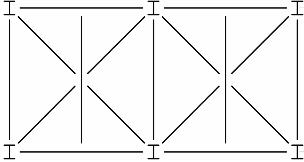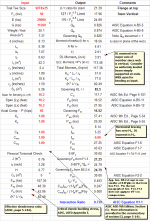WT Design

Description
Design of WT Braces.
In most commercial buildings, floorand roof diaphragms are used to distribute loads in the horizontal plane of the structure to the lateral load resisting system. Due to the open nature of most industrial structures, diaphragms are not present, and horizontal bracing is often used to distribute the loads in the horizontal plane. Horizontal bracing is also used in heavily-loaded commercial structures, where a diaphragm is not present, or where the strength or stiffness of the diaphragm is not adequate. When horizontal bracing is used, the beams at that elevation become members in a horizontal truss system, carrying axial loads in addition to the normal bending and shear gravity loads. Careful attention should be paid to the beam end connections within the truss system because the axial loads transferring through the connections can be large.
Selection of Structural Shapes: The most common shapes used for horizontal bracing are single angles and WT shapes. Single angles are the most economical shape for resisting small and medium loads, because WT shapes must be split from W shapes and straightened by the fabricator. WT shapes can be used to resist larger loads and where long spans are required.
Calculation Reference
Design of Commercial Buildings
Structural Design
AISC 9th Edition
Calculation Preview
Full download access to any calculation is available to users with a paid or awarded subscription (XLC Pro).
Subscriptions are free to contributors to the site, alternatively they can be purchased.
Click here for information on subscriptions.



